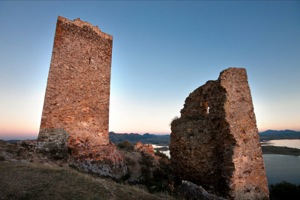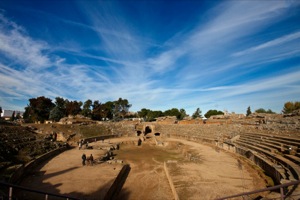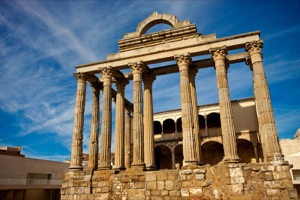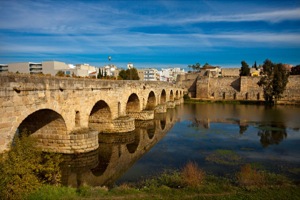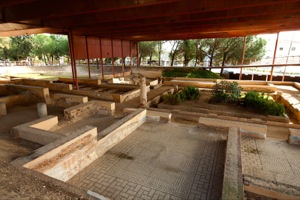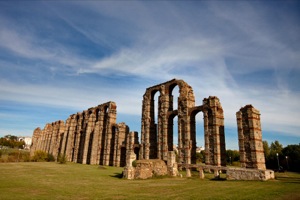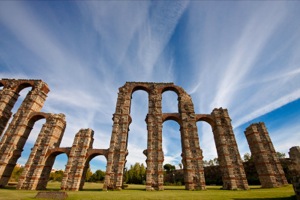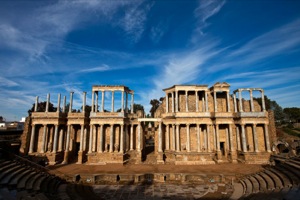Art and culture
Archaeological Ensemble of Mérida
Mérida's Roman past is still very obvious from the many monuments remaining, reflecting life in one of the Empire's provincial capitals.
World Heritage Site
Location and Contact:
- Tel.:+34 924 00 49 08
- Tel.:+34 924 33 07 22
- Fax: +34 924 00 49 16
- Email: informacion@consorciomerida.org
- Email: difusion@consorciomerida.org
- Website address: www.consorciomerida.org
- Website address: turismomerida.org
- Facebook: https://www.facebook.com/MeridaConsorcioDeLaCiudadMonumental
- Opening times
April-September: 9am - 9pm.
October-March: 9am - 6:30pm.
- Fee
Entrance to Archaeological Ensemble: normal €15, reduced €7.5, groups €8.
Entrance to each monument: normal €6, reduced €3, groups €4.
More info: tickets
-
Mérida's Roman past is still very obvious from the many monuments remaining, reflecting life in one of the Empire's provincial capitals.
Faced with the exceptional remains of the Roman past of Merida, it is impossible to stop admiring the grandeur of this city's architectural heritage, which was declared a World Heritage Site by UNESCO in 1993. The monuments that have survived show us what the public buildings of a Roman provincial capital were like. The Emperor Octavius Augustus founded the colony of Augusta Emerita in 25 BC, later becoming the capital of the Roman province of Lusitania. The city maintained its splendour during the Visigoth period, of which it also retains many traces, and during the Muslim period; these are some of the 29 parts of the city's Archaeological Ensemble.
Visiting these monuments is easy, as most of them were within the walls of the Roman colony. You have to visit the theatre, the amphitheatre, the house of the amphitheatre, Santa Eulalia basilica and the Roman circus. And you must also visit Los Milagros aqueduct, the Temple of Diana, the Forum gateway, Trajan's Arch and Casa del Mitreo House, an example of a Roman home with its Cosmogonic Mosaic.
There are a number of other sites that are outside the city's Roman walls, including the Cornalvo and Proserpina reservoirs, San Lázaro aqueduct, the bridge over the Guadiana river and the Alange baths.
Although we do not know exactly when they were built, the famous public baths at Alange, 18 kilometres outside Mérida, are usually dated from the 3rd century AD. Two circular baths with domed roofs remain from the original Roman buildings. Historic information shows that the original baths also had a caldarium, or hot bath, steam baths and gardens.
-
- Origin:
-
- Iron and Copper Age
- Prehistoric
- Romanisation (AD)
- 1st century
- 2nd century
- 3rd century
- 4th century
- 5th century
- 6th century
- 7th century
- 8th century
- 10th century
- 11th century
- 12th century
- 13th century
- 14th century
- 19th century
- 15th century
- 16th century
- 17th century
- 18th century
- 20th century
- 21st century
- Construction:
-
- Aqueduct
- Minaret
- Amphitheatre
- Arch
- Basilica
- Road
- Manor or noble house
- Cemetery
- Circus
- City / Settlement / Excavations
- Cloister
- Office building
- Military building
- Civil engineering
- Mosque
- Walls
- Necropolis
- Mansion
- Portico
- Bridge
- Door
- Walled enclosure
- Tomb
- Synagogue
- Theatre
- Temple
- Thermal baths
- Tumulus
- Archaeological site
- Art period:
-
- Islamic
- Neoclassic
- Romanisation
- Roman
- Visigoth
- Period in history:
-
- Romanisation (a. C.)
- Romanisation
- 1st century
- 2nd century
- 3rd century
- 4th century
- 10th century
- 6th century
- 7th century
- 8th century
- 10th century
- 11th century
- 12th century
- 13th century
- 14th century
- 19th century
- 15th century
- 16th century
- 17th century
- 18th century
- 20th century
- 21st century
- Official name :
-
- National heritage
Accessibility:
- Disabled access
- Admits guide dogs
- Accessible car park
- Assistance for people with reduced mobility
- Guide for disabled people
- Adapted educational materials
- Access ramps
- Accessible restaurant
- Adapted route for disabled people
- Adapted paths
- Assisted bathroom service
- Toilet with disabled access
- Toilet for disabled people in common areas
Services:
- Application for Mobile Devices
- Audioguide
- Coffee shop
- Facilities Babies
- Facilities for Disabled
- Conference Room
- Shop
- Guided Tours
Gallery:
More suggestions
-

Roman theatre of Mérida
The town of Mérida contains one of the most important archaeological sites in the world, of which the Roman theatre forms part.
-

Roman amphitheatre of Mérida
The setting for fights between gladiators and wild beasts in Roman times, a large part of the structure of this amphitheatre is preserved intact today.
-
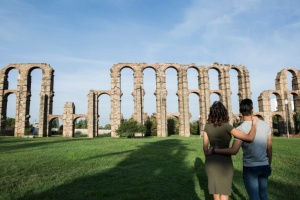
Los Milagros Roman Aqueduct
This partially preserved massive aqueduct was one of the large works at Emerita Augusta for supplying water to the city.
-
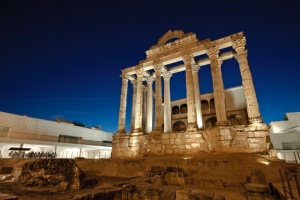
Roman Temple of Diana
It is a beautiful religious Roman building, very well preserved, that is part of Mérida's archaeological ensemble.
-
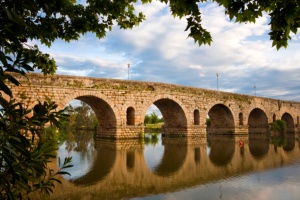
Roman bridge on the Guadiana River
In the city of Mérida, on one of the most shallow sections of the Guadiana River, we find a bridge built in the 1st century, at the same time as the foundation of Emerita Augusta. Thanks to its large size and features it is one of the most important Roman bridges in the Peninsula.
-
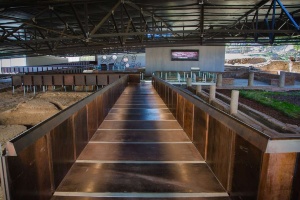
Casa del Anfiteatro
This is a wonderful example of a Roman dwelling complete with mosaics and frescoes. It is open for visit and very close to the Mérida Amphitheatre and the National Museum of Roman Art (MNAR).
-
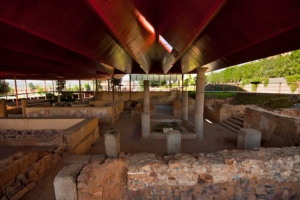
House of Mitreo
A dwelling from Roman times, built on the outskirts of Emerita Augusta, where luxury and comfort were not lacking.
-
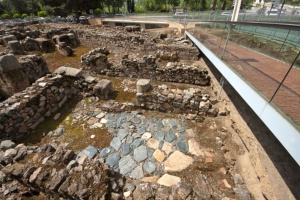
Morerías Archaeological Zone
Find out how the town of Mérida developed from Roman times to the Visigoth era.
-
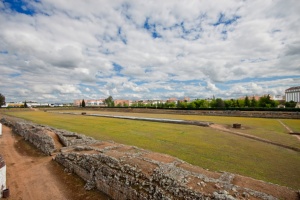
Roman Circus
Discover one of the most magnificent circuses in the Roman Empire and one of the best preserved.
-
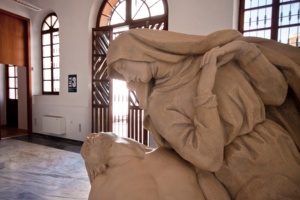
Museum of Mérida
The Museum of the Town of Mérida houses a collection on the Mérida-born sculptor and other pieces that take one on a route through the town's history.
-
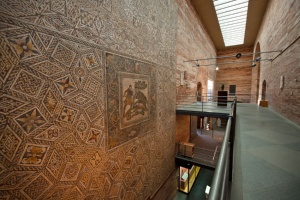
National Roman Art Museum in Mérida
The National Roman Art Museum (MNAR) shows the visitor different sides of daily life in the province of Hispania.
-
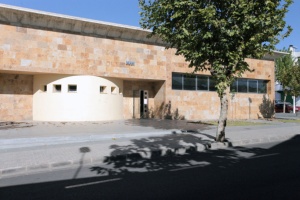
Extremadura Geology Museum
Its collection has made this museum one of the most important of its kind.
-
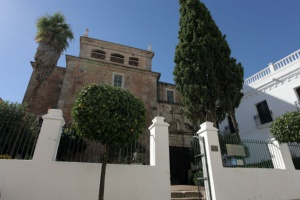
Museum of Visigoth Art and Culture
The collection of Visigoth pieces in this museum brings together relics from Mérida from the 4th-8th centuries, as the capital of the Diocesis Hispaniarum and as the metropolitan capital of the province of Lusitania
-
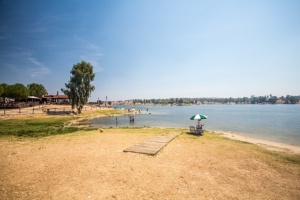
Proserpina reservoir
Proserpina reservoir, within easy reach of Mérida, dates back to Roman times and forms part of the region's archaeological ensemble, which has received the UNESCO World Heritage designation.
-
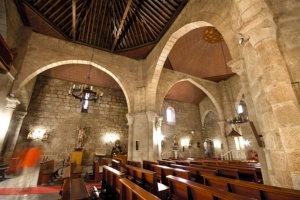
Basilica of Santa Eulalia
A space included in the archaeological complex of Mérida, and a showcase within the regional capital as it contains the town's patron.
-

Roman bridge on the Albarregas River
Built when the Roman city of Emerita Augusta was founded, the bridge on the Albarregas River is still in perfect condition and includes some of its original features.
-

Roman bridge on the Guadiana River
In the city of Mérida, on one of the most shallow sections of the Guadiana River, we find a bridge built in the 1st century, at the same time as the foundation of Emerita Augusta. Thanks to its large size and features it is one of the most important Roman bridges in the Peninsula.
-

Remains of Roman thermae in Mérida
Without a doubt the capital of Extremadura is one of the region's enclaves with the most thermal bath constructions.
-
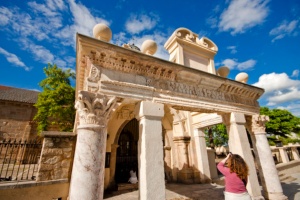
Remains of the Temple of Mars
The basilica of Santa Eulalia in Mérida contains the remains of the Roman temple of Mars in its atrium, known as "el hornito".


